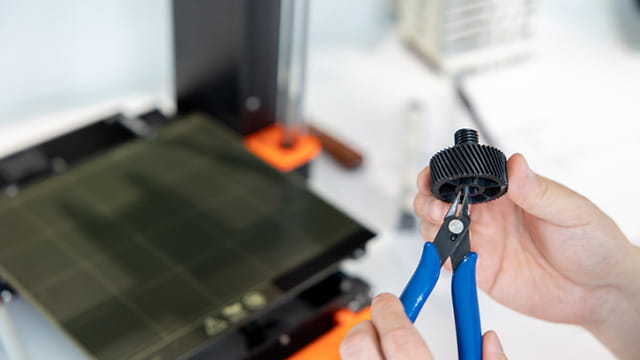CNC machining can be a fast and economical method for producing high-precision plastic parts in small and medium quantities. However, the part’s design plays a significant role in the quality of the part and efficiency of the project. Design for manufacturing (DFM) is the process of designing machined parts, subassemblies, or complete products to optimize manufacturing processes while reducing costs and maintaining quality.

Most costs for CNC machined parts are driven by material selection, part setup, tooling, and machining time. DFM looks to streamline processes and remove complexity, when possible, to reduce costs. Below are some guidelines that are followed. However, quality, form, fit, and function are always a priority.
Material selection – Material selection significantly impacts a product’s manufacturability, performance, and cost. Sometimes, substituting materials can significantly reduce costs without compromising function or reliability. It will be important that the engineers understand how the product will be used, the stresses it will encounter, the environments it is exposed to and the length of exposure (intermittent or continuous), and other materials it is in contact with.
Part setup, tooling, and machining time – These three elements are interrelated in many cases. Part setup and the need to change tooling can add to machining time.
You may not have considered part setup when designing your product, but it can add cost to a project. For a complex design with features on several sides, a CNC operator may need to use multiple machine setups to produce the part. In many cases, this means manually maneuvering the part to machine all axes. However, this will depend on the type of CNC machine used (e.g., 3-axis, 5-axis). Keep in mind that manually rotating the part requires the machine to be recalibrated and a new coordinate system defined.
Tolerances can impact cost. General tolerances should be used, and tight tolerances should be used only where necessary.
Irregularly shaped parts may require fixtures to ensure tolerances are met. Designing custom fixtures can increase costs and lead times. Non-standard features may require special tooling, which can add costs.
Tool access is one of the limiting factors when designing a part. There are some design guidelines that engineers will look for on your drawing to ensure that time and costs are not unnecessarily added. A few are discussed here.
Most CNC machining tools are cylindrical with a flat or spherical end, restricting the shape. Inside corners will always have a radius. Smaller tools can reduce the fillet size but introduce additional tooling costs. A general rule is the inner edge radius should be 1.3 times the milling tool radius (e.g., have a 13 mm radius if working with a 10 mm milling tool). If possible, don’t use a floor radius so the same tool can be used.
Holes smaller than 20 mm should also use standard drill bit sizes when possible, as a non-standard diameter requires an end mill tool. Reamers and boring tools can be used to finish holes that have a tight tolerance. Standard tools also have a limited cutting length as well. The depth of a cavity is generally 3-4 times the diameter. Deep cavity milling may require special tooling.
Undercuts can’t be machined with standard tools. If undercuts are a feature on an internal wall, tool clearance must be considered. The space between the machined wall and other internal walls should be at least four times the undercut’s depth.
The minimum wall thickness for plastic machined parts is 1.5 mm. Thinner than this, and accuracy and strength are diminished. The heat during machining may soften the walls, causing warping.
Additional considerations beyond machinability may be considered depending on the project and its needs.
Standardizing – Engineers may look across products to see if parts can be standardized to avoid having multiple customized components. They may also look to use standard hardware in product assembly.
Component reduction – In addition to standardizing components, design engineers may evaluate it to see if multiple components can be combined without significantly causing a negative impact on its quality, function, aesthetic, or cost. This will need to be evaluated to ensure it doesn’t add cost to machining or create issues with use.
Life cycle – Depending on your requirements, the engineer may also evaluate your product with its total life cycle in mind. This may include:We have the experience, knowledge, and tools to ensure your CNC machined plastic part meets your requirements. Applying DFM principles, our design and engineering team will ensure your part can be manufactured most efficiently and cost-effectively.